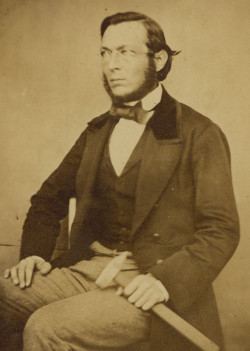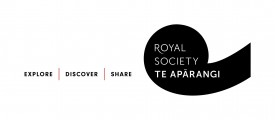 2025 Hochstetter Lecturer:
2025 Hochstetter Lecturer:
John Townend
John is a world leading expert in earthquake seismology who is at the heart of research, teaching and applications of earthquake research within Aotearoa and globally. John’s interests encompass not just seismology or geophysics, but earthquake science more broadly. This breadth of interest and knowledge has enabled him to bring together experts of many disciplines to collaborate on large scale scientific problems in New Zealand, like co-leading the Deep Fault Drilling Projects which drilled two boreholes into the Alpine Fault.
This year's Hochstetter Lecture will review how understanding of the Alpine Fault’s earthquake-generating behaviour has developed in recent years, catalysed by novel paleoseismological, geological, and seismological studies including the Deep Fault Drilling Project (DFDP) and the 450 km-long Southern Alps Long Skinny Array (SALSA), and how technological advances such as optical fibre sensing, “virtual earthquakes”, and artificial intelligence are providing new insight into fault zone structure and earthquake generation.
The concluding portion of the lecture will address what steps the earthquake science community could take now to record invaluable data during the next Alpine Fault earthquake and thus inform global understanding of earthquake rupture phenomena.
Hochstetter Lecture tour dates
Details of John's nationwide speaking tour are now available on the Events section of the website.
Past Hochstetter Lecturers
Some of the more recent Hochstetter Lectures are available as video recordings.
Where this is the case the Lecture topic below has been hyperlinked to the GSNZ YouTube channel.
| Year | Person | From | Lecture topic |
| 2024 | David Barrell |
GNS |
|
| 2023 | Lorna Strachan |
Auckland |
|
| 2022 | David Prior |
Otago |
The shear zones that hold back the ice sheets |
| 2021 | Darren King and Dan Hikuroa |
NIWA and University of Auckland |
Encouraging plural methods and values as the foundation for cross-cultural research collaborations. Slides only. |
| 2020 | Phaedra Upton | GNS |
Supporting Lecture |
| 2019 | Bill Fry | GNS | Distant sourced tsunamis. |
| 2018 | Alan Cooper | Otago | Tectonics of the Haast Schists. |
| 2017 | Dave Craw | Otago |
Tectonics and genetics in topographic evolution. |
| 2016 | Colin Wilson | Victoria | Supervolcanoes. |
| 2015 | Nick Mortimer | GNS |
Supplementary lecture: Litho2014: a New Zealand stratigraphy for everyone |
| 2014 | Chris Bromley | GNS | The environmental effects of geothermal development. |
| 2013 | Mark Quigley | Canterbury | Canterbury earthquakes. |
| 2012 | Mike Issac | GNS | Oligocene drowning of Zealandia |
| 2011 | Russ van Dissen | GNS | Outcomes from the multi-disciplinary, multi-institutional and highly innovative "Its Our Fault" (IOF) project. |
| 2010 | Joel Baker | Victoria | A Geochemist's Window into Earth's Origins, History and Future |
| 2009 | Kathy Campbell | Auckland | Extreme Life: Terrestrial hot-springs and the search for early life on Earth (and Mars?) |
| 2008 | Vern Manville | GNS | The March 2007 Ruapehu Crater Lake breakout lahar |
| 2007 | Paul Williams | Auckland | Environmental change: a view from down under |
| 2006 | Bruce Hayward | Geomarine Research | Deciphering New Zealand´s geological and environmental history using foraminiferal microfossils |
| 2005 | Jamie Shulmeister | Canterbury | Late Neogene paleoclimate |
| 2004 | Andy Tulloch | GNS | The geology of Rakiura (Stewart Island) - magmatic arcs, sedimentary basins and Traps for the unwary |
| 2003 | Ian Wright | NIWA | Discovering and understanding submarine volcanoes: the Kermadec Arc sector of the Pacific Ring of Fire |
| 2002 | Rupert Sutherland | GNS | Cretaceous-Cenozoic evolution of NZ and Antarctica, and its significance for understanding global plate tectonics |
| 2001 | Simon Cox | GNS | Mapping the Southern Alps: an attempt to make sense of the Torlesse |
| 2000 | Peter Ballance | Auckland | Cenozoic development of the southwest Pacific - the evolution of a plate boundary |
| 1999 | Steve Weaver | Canterbury | Growth and development of mainland continental crust |
| 1998 | Shane Cronin | Massey | Volcanic eruption and lahar mechanisms |
| 1997 | Tim Stern | Victoria | Crustal structure and the tectonics of a transform plate boundary, from deep crustal seismic studies of southern New Zealand |
| 1996 | John Gamble | Victoria | Magma mixing and unmixing in the Earth |
| 1995 | Kelvin Berryman | GNS | Deciphering earthquakes from the geologic record &endash; progress in paleoseismology studies in New Zealand |
| 1994 | Rick Allis | GNS | Thermal Evolution of Sedimentary Basins |
| 1993 | Stuart Simmons | Auckland | Recent work in the Waimangu Geothermal Field |
| 1992 | Bruce Houghton | GNS | Fire and water: products and processes of basaltic explosive volcanism |
| 1991 | Richard Norris | Otago | When plates collide, recent work on the Alpine Fault in Westland |
| 1990 | Brad Pillans | Victoria | Quaternary sea level and climate change: new tests for old theories |
| 1989 | Jane Newman | Canterbury | West coast paleo-swamp models |
| 1988 | Ewan Fordyce | Otago | The history of whales, oceans and continents: patterns and processes in the southern hemisphere |
| 1987 | Martin Reyners | DSIR Geophysics | Big faults and little earthquakes - what do microearthquakes tell us about earth deformation and crustal structure? |
| 1986 | Terry Seward | DSIR Chemistry | Metal transport and deposition in active ore-forming hydrothermal systems |
| 1985 | Lionel Carter | NZOI | Passage to Hikurangi - the movement of debris from the Southern Alps to the deep Pacific Ocean |
| 1984 | Cam Nelson | Waikato | Some preliminary studies of mid-late Cenozoic deep-sea cores from the New Zealand sector of the Southwest Pacific: DSDP Leg 90 |
| 1983 | Peter Barrett | Victoria | The History of the Antarctic Ice Sheet (?Eocene to Recent) |
| 1982 | Bernhard Spörli | Auckland | Trouble in the North - tectonics of Northland and its relation to the rest of New Zealand |
| 1981 | Vince Neall | Massey | Collapsing cones and vanishing volcanoes - the instability of a stratovolcano such as Egmont and its hazards to humanity |
| 1980 | John Bradshaw | Canterbury | Over the edge: Permian to Cretaceous on the margin of Gondwana |
| 1979 | Chris Adams | DSIR INS | New ways with old ages |
| 1978 | Dick Walcott | Victoria | Structure and tectonics of the present plate boundary zone in NZ |
| 1977 | Roger Cooper | NZGS | NZ in the early Paleozoic |
| 1976 | Trevor Hatherton | DSIR Geophysics | Geophysicists, in short, and the sleeping monster |
| 1975 | Bob Carter | Otago | The Kaikoura sequence in Fiordland and western Southland- an Oligocene continental margin and its relation to a Miocene-Recent plate boundary |
| 1974 | Harold Wellman | Victoria | Plate tectonics and NZ during the last 80 m.y. |
Ferdinand Ritter von Hochstetter

Christian Gottlieb Ferdinand von Hochstetter (1829-1884) joined the Austrian Geological Survey in 1853. Four years later he was appointed geologist on the Austrian frigate Novara on an expedition to circumnavigate the globe. The Novara berthed in Auckland in 1858. At the request of the New Zealand Government and supported by the Auckland Provincial Council, Hochstetter, accompanied by Julius Haast and others, surveyed the Drury Coal Field to the south.
This was accomplished so successfully that the provincial council persuaded the commander of the Novara to allow Hochstetter to remain in New Zealand to undertake further work in the province. Over the next five months Hochstetter and Haast, along with a support team, visited much of southern part of Auckland Province, including the volcanic region and the gold diggings at Coromandel Harbour.
On completion of his Auckland mapping, Hochstetter was commissioned by the Nelson Provincial Council to report on the mineral wealth of the province. Hochstetter, accompanied by Haast, arrived in Nelson on 4 August 1859. In Nelson, they examined Dun Mountain, from which he collected and subsequently named dunite, the Aorere Gold Field and other places of interest.
Hochstetter left Nelson for Sydney on 1 October 1859, on the first leg of his return voyage to Europe. Although he never returned, Hochstetter retained a life long enthusiasm for New Zealand. He maintained a correspondence with Haast and other New Zealand friends. His contributions to New Zealand are commemorated by several place names, and by names of many New Zealand organisms.
Hochstetter was the first to describe and interpret many features of New Zealand geology. His geological maps of Auckland and Nelson were the first of their kind in New Zealand.
A longer more detailed biography Ferdinand von Hochstetter can be found in Te Ara.
Hochstetter's Diaries from his time in Nelson are available from our webshop.
